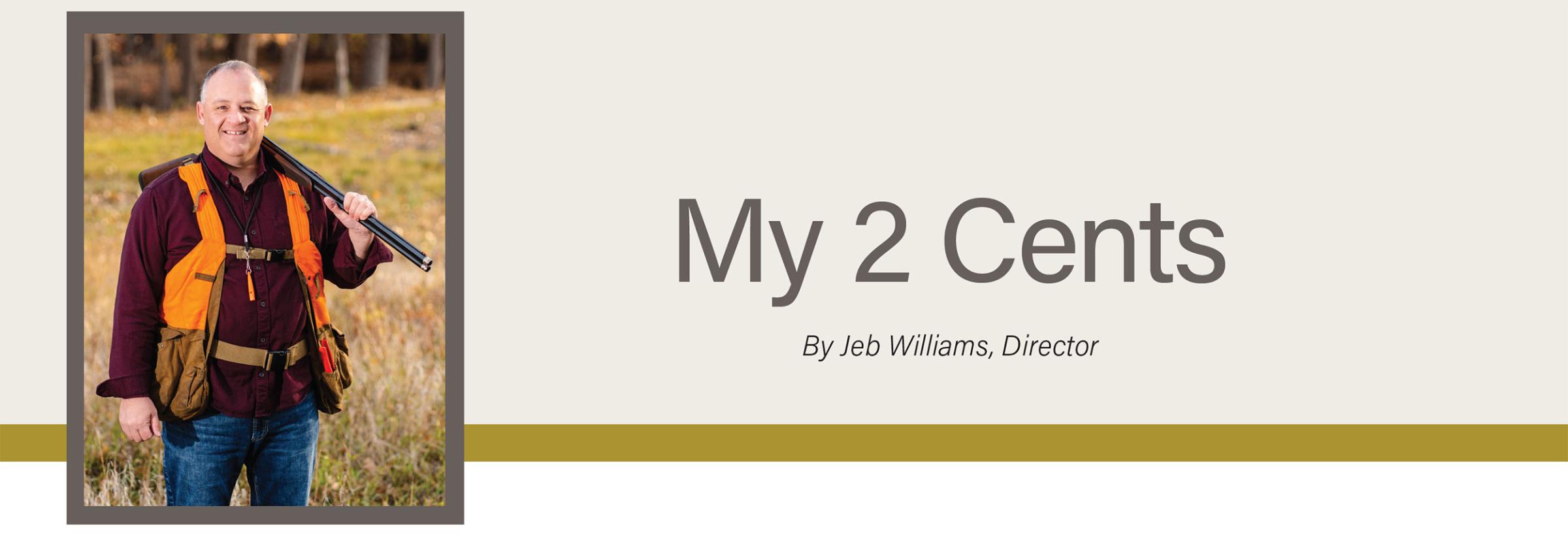
My 2 Cents
As I write this, that special Friday prior to November 11 is quickly approaching. North Dakota’s deer gun season is one of the state’s most popular activities that annually reunites friends and families across the state.
I wanted to address a deer season topic we’ve heard a lot about over the last couple of months and explain our thought process. Epizootic hemorrhagic disease typically rears its ugly head in extreme southwestern North Dakota once or twice every decade, but this year the EHD footprint was farther north and east than most years.
EHD is a virus that is transmitted to deer by biting midges and while it can impact other big game animals, white-tailed deer are the most impacted. Warm, summer-like conditions extended into September and October, allowing for continued midge activity. Many places didn’t experience a hard frost or two until late October, which is needed to kill the at-fault insects and halting the virus cycle.
Some of the areas that experienced EHD this year are not typically in EHD’s common path, which can cause intense localized mortality of white-tailed deer. This virus not only hit a new population of deer in 2021, but also a population of hunters who have never experienced an EHD die-off in their unit.
Some of these areas did indeed experience this loss and we heard from many of you as to your concerns about the deer population. Over the years after experiencing many EHD events, the Department responded with what has been our consistent strategy associated with EHD die-offs: in units where the intensity of outbreak may impact hunter opportunities in some areas, we offered refunds to those who have a license to harvest a white-tailed deer within a specified unit. We think that is only fair.
One of the things that EHD has taught us over the years is that these die-offs are not consistent across hunting units. Some areas can and do experience a high mortality, while other animals within the unit are unaffected. Closing the season, as some have suggested, would restrict the option for both hunters and landowners in parts of these units where deer numbers have not been impacted by EHD, and a harvest is still needed.
As we do each year, we will evaluate the deer hunting season and utilize any winter survey data we are able to collect to determine how numbers should be adjusted for 2022. This will be one of several discussion topics at the upcoming advisory board meetings. The meeting format always includes time to discuss local issues and for the Department to take input on matters important to those in attendance. It also includes information Department personnel feel is important to communicate to the public, including the upcoming fishing proclamation, low water levels and lake access, a statewide grassland initiative, and input from hunters and landowners on electronic posting of private land.
I look forward to those conversations.
